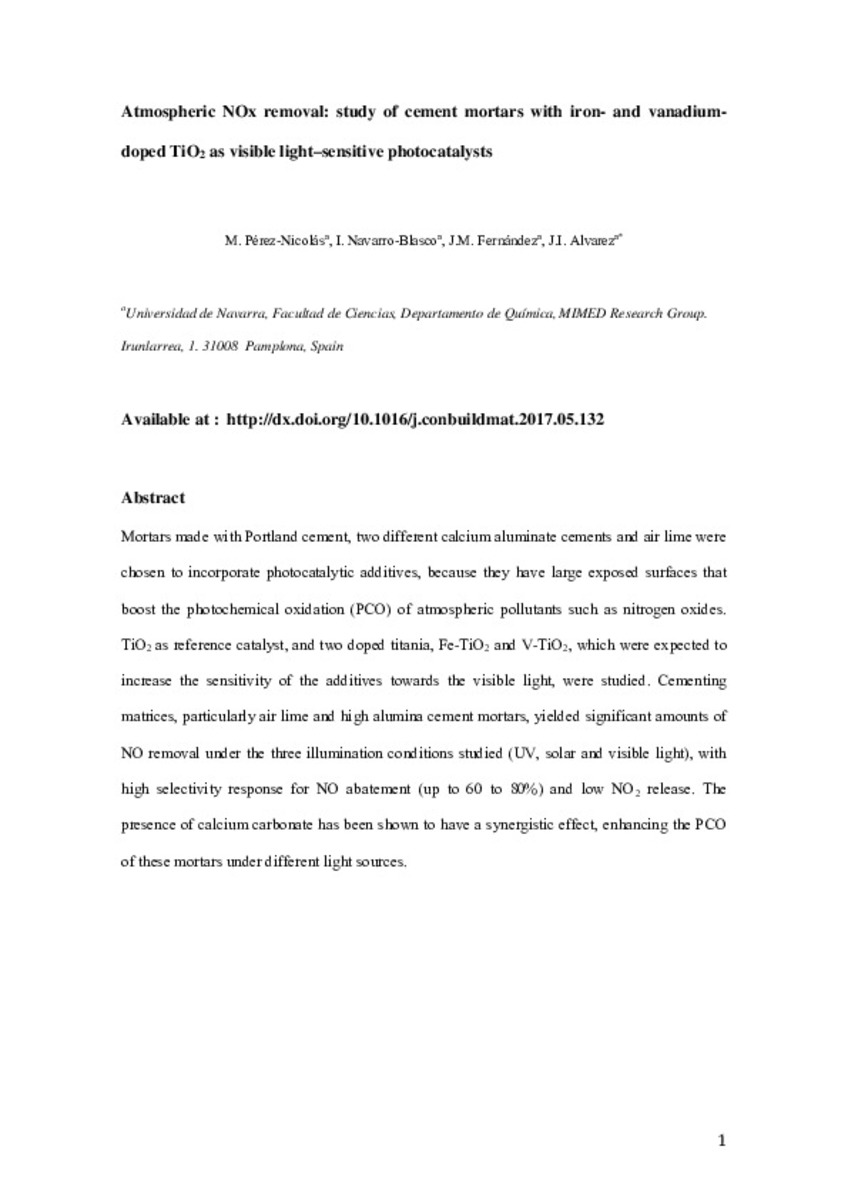Atmospheric NOx removal: study of cement mortars with iron- and vanadium-doped TiO2 as visible light–sensitive photocatalysts
Keywords:
Titania
Iron-doped Titania
Vanadium-doped Titania
Photocatalysis
Visible light–sensitive photocatalysts
NOx removal
Cement mortars
Note:
Creative Commons Attribution Non-Commercial No Derivatives
Citation:
Perez-Nicolas, M. (María); Navarro-Blasco, I. (Íñigo); Fernandez, J.M. (José María); et al. "Atmospheric NOx removal: study of cement mortars with iron- and vanadium-doped TiO2 as visible light–sensitive photocatalysts". En Construction and Building Materials. 149, 2017-09-15, 257 - 271
Statistics and impact
0 citas en

Items in Dadun are protected by copyright, with all rights reserved, unless otherwise indicated.











